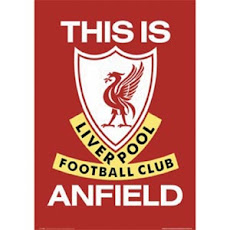Through Oceans, Down the Hill, and Back
Homecoming the Ateneo Way
by rick olivares
Homecoming the Ateneo Way
by rick olivares

The Second Coming
Every first Saturday of December, Ateneans celebrate the Grand Alumni Homecoming, the culmination of a year’s worth of remembrance, events, get-togethers, and reconnecting with people and a school that have shaped the persons that they are today.
In truth, the first homecoming was held on April 14, 1859 when six Jesuit priests and four brothers disembarked from the Spanish ship Luisita after a two-month voyage from the Iberian Peninsula to the Far East where lay one of the Castillan Crown’s prized colonial possessions.
The Society of Jesus was back on Philippine soil two hundred and seventy-eight years after Fathers Antonio Sedeño, Alfonso Sanchez, and Brother Nicolas Gallardo (whose are all now honored with street names in Salcedo Village in Makati City) first arrived.
The common trait the two waves of Jesuits had was that they were builders of the faith, of men, and of country. Fr. Sedeño, centuries before was a trained architect who not only had a hand in the construction of the first school in the Philippines in the Colegio de San Ignacio and the Jesuit Mission House but also the residence of the Bishop of Manila and ultimately Fort Santiago (as commissioned by Governor General Santiago De Vera).
But some did not see the Jesuits that way.
“Compulsus feci,” sadly muttered Pope Clement XIV when he signed the Divinus ac Redemptor in 1773 that ordered the disbanding of the Society of Jesus. It was a direct result of the collusion by the Catholic powers and other orders who believed that the Jesuits educating of the indios empowered them with ideas of revolucion and independencia. “I did it on compulsion.”
But in kinder times, came another proclamation from Spain’s Isabella II that would have even lasting and longer repercussions. An effect that has had a profound on modern civilization as we know it: “Bearing in mind the important services which the Society of Jesus has rendered to the conversion and instruction of the Islands and Spanish dominions in America, I ordain that the Society be reestablished in those lands…”
And thus came the homecoming if not a latter-day crusade to spread Christianity and knowledge after close to a century of absence in the archipelago.
Like Fr. Sedeño three centuries before, the band of fathers and brothers of Fr. Jose Fernandez Cuevas that arrived in 1859, immediately took over an important building that eventually became a noted institution, the Escuela Pia that became the Escuela Municipal and eventually the Ateneo Municipal.
Barely 50 years after their return, the Society could have once more been accused of conspiracy to commit treason for many of their students were at the forefront for the both the peaceful and armed movements for independence – Jose Rizal, the Luna brothers Juan and Antonio, Gregorio del Pilar, and Martin Delgado among others.
But then as it is today, they were Ateneans engaged in “Nation Building” as what was required of the times.
Fr. Cuevas, as recounted today's new Provincial Superior, Fr. Jose Magadia S.J., didn’t seem keen on deterring from their original task of converting Mindanao as he twice denied pleas to take charge of the Escuela Pia. But unlike Blessed St. Peter who thrice denied Christ, the third time was the charm and so the bloodline of the Colegio de San Ignacio was continued.
The Journey Continues
The dress of the day last June 14, 2009 was retro as Jesuits and alumni wore barong tagalogs, camisa de chinos and period clothing. But conspicuous amongst the Filipiniana were about a dozen disciples of another kind – alumni and current students who wore a simple white t-shirt that featured an old Spanish ship with a simple message… “The Journey Continues.”
Unlike the exhausting two-month voyage of Fr. Cuevas and company across dangerous seas, technology and progress has allowed modern man to retrace the steps of our founding fathers in the space of a few hours.
So it was a merry and introspective trip down memory lane from the cobblestone streets of Intramuros to the slick and cemented thoroughfares of Salcedo Village to Rockwell to Medical City and lastly to tree-lined lawns of Loyola Heights.
The Sunday drive and motorcade was leisurely and without the choke of the daily traffic grind, seeing the old Padre Faura campus as nothing more than a mall that has sadly become a symbol of growth in the country, made many offer a quick prayer of thanks to the late Fr. William Masterson S.J. whose foresight begat an exodus to Loyola that was a stroke of pure genius.
The retrospective was introspective to say at the least and it offered a fresh perspective on how the Ateneo’s history is closely intertwined not just with the city of Manila but with the country’s constant search and quest to establish itself first as an independent nation then to our place in an ever-changing world.
Ironically, it was Manila Mayor Alfredo S. Lim, a non-alumnus, who provided a novel moment of introspection as he quoted and paraphrased the preeminent Atenean, Rizal, with a JFK-like “ask-not-what-your-country-can-do-for-you” tone and challenge.
“Ang hindi marunong lumingon sa pinanggalingan ay hindi makakarating sa pinaroroonan.” He segued that with a note that brought many a nod and oh-yeah smile when he pointed out that when Ateneo left Manila for Quezon City, it opened satellite campuses in Makati and Pasig cities while the old campus in Manila had become largely forgotten as it remains the last true ruins in the Walled City that was destroyed 65 years ago. “Sana hindi lang dahil anibersaryo ng Ateneo ay saka kayo bumalik.”
Return to the aerie
Ateneo may have left the capital city and its vaunted alumni scattered throughout the archipelago and the world, but the school has not forgotten the people its graduates are supposed to serve.
In the Ateneo School of Medicine and Public Health, they are currently training and preparing doctors with a social conscience. Men and women who will heal and cure in the face of urban decay and the forgotten hinterlands instead of fleeing the country.
In the Gawad Kalinga villages that have become a model in the fight versus poverty, there are Ateneans who not only are involved with building houses but also in teaching the young and impoverished because they believe that education is the great equalizer.
During those years in Intramuros, the bridge that connected the school with the Jesuit Mission House above Anda Street was a symbolism of detachment yet of being amidst of everything. There was also the Wall that surrounded the city yet at once, its graduates were encouraged to go out to the world.
By the time of the move to Loyola, it was still very much the same except that the metaphor turned to “the Hill between the earth and sky.”
But as the motorcade that retraced the Ateneo’s journey through Manila neared Loyola Heights, there was a feeling of pride that its participants were going home.
Home. It is such a powerful word that conveys all sorts of emotions.
When the Luisita left Cadiz for the far-flung reaches of the Spanish Empire, Fr. Jose Fernandez Cuevas S.J. re-read Her Majesty’s dictum that once more launched the Society of Jesus’ soldiers across the globe. When the ship arrived in Manila on the night of April 14, 1859, the Jesuits went above deck to view the lights that formed Manila, their new home.
They stayed on board for the night before disembarking and when they did, they knew they were continuing a story that had been suspended a century before.
What they would give to see where the journey led the Ateneo to 150 years later!
--------------
For Fathers Jose Fernandez Cuevas, Jose Ignacio Guerrico, Juan Bautista Vidal, Ignacio Serra, Pascual Barrado, and Ramon Barua as well as Brothers Pedro Inunciaga, Joaquin Coma, Venancio Belzunce, and Jose Ignacio Larrañaga.
Pathfinders. Trailblazers. Men for others.
Ad Majorem Dei Gloriam.
rix
--------------------------
Hey, when you drive through Salcedo Village, think of the good Jesuits Fathers Sedeño and Sanchez and Bro. Gallardo who helped develop much of Manila way way back then.










No comments:
Post a Comment